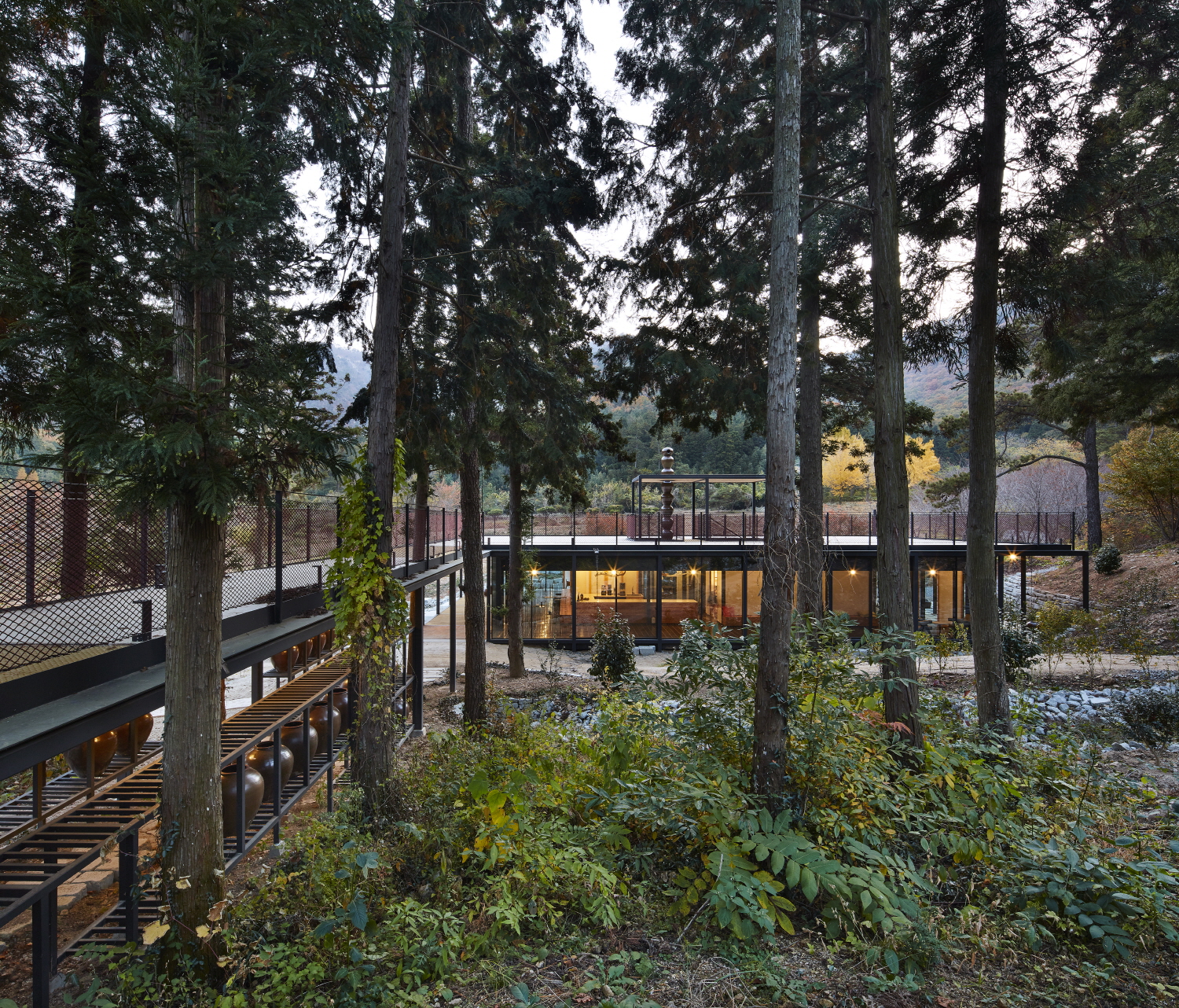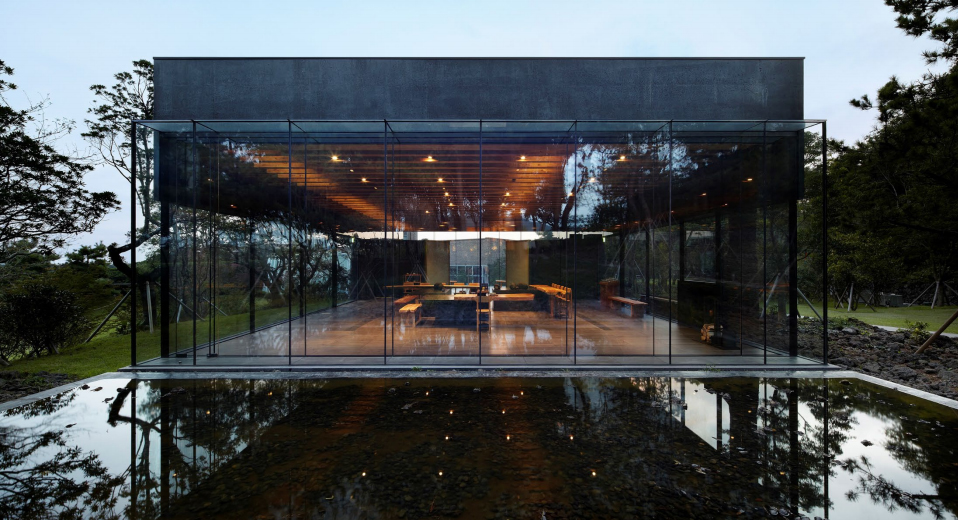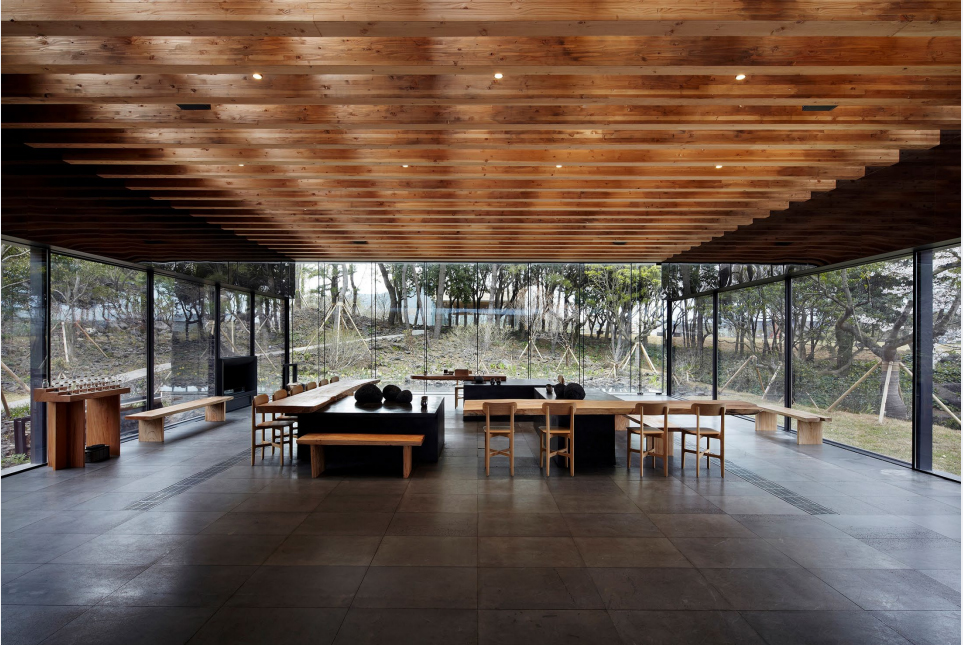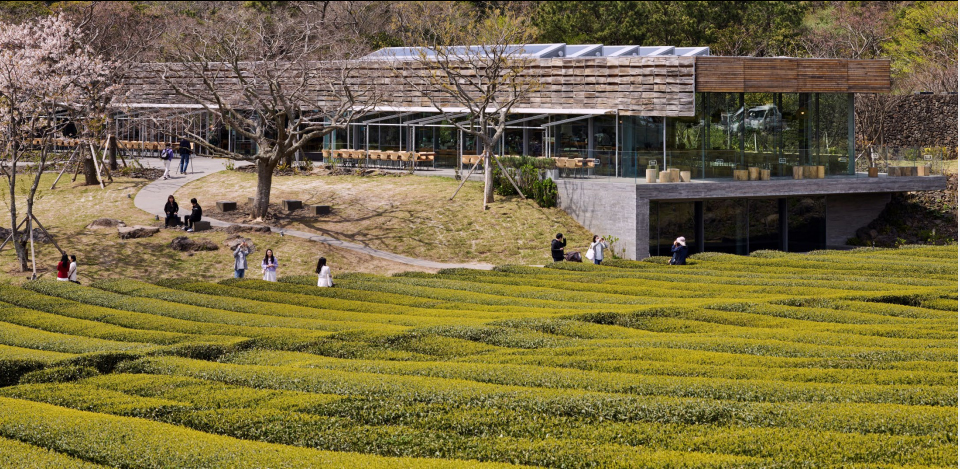SPACE March 2024 (No. 676)

Choru(2023)
Quiet Acrobat▼1
‘Honestly, from observing his previous work, I wasn’t 100% confident that Cho would be able to design a serene building for Osulloc.’,▼2 noted Suh Kyungbae, chairman and CEO of Amorepacific Group (hereinafter Amorepacific). He’s probably not the only one who had this feeling. Most critics, and his fellow architects, may have agreed, or still do. Biased opinions don’t go away easily; indeed, the stronger the first impression, the more difficult it is to dispel bias. The more exceptional projects, such as the Dalki Theme Park (2006) and Boutique Monaco (2004), which were unthinkable for previous generations of architects, have carved out the presiding impression of Cho Minsuk (principal, MASS STUDIES). Moreover, his career at OMA, overlapping with a time in which it served as a think tank for the world architecture community (although many Korean architects have since practiced there), has led many to interpret the works of MASS STUDIES in the light of Rem Koolhaas.
In his 2017 article for Architectural Critics Association, Lim Kitack (professor, Bukyong National University) praised Cho Minsuk as a ‘ “creative destructor” who is “honest” with his desires and needs’ in an era of global neoliberalism. At the same time, he read the changes to MASS STUDIES’ projects since 2012 as a sign of ‘conservatisation’ and hoped that he would continue to be a ‘young resistance’ or ‘nomad of resistance’.▼3 Another critic, Song Jong-ryeol, wrote, ‘His work is full of tremendous immersion in urban reality and a desire to change it’, adding ‘I wonder how an adolescent boy’s “uncertain passion for uncertainty” “in front of the mirror” will resist the enormous power of capital.’▼4 Most critics have regarded his works as an attempt to embrace, rather than reject, complex and disparate elements of the metropolis, to find a niche, or unexpected possibilities, rather than conform to its realities.
In crude terms, MASS STUDIES is perceived through the frame of a text, like Delirious New York and Junkspace written by Rem Koolhaas.Of course, this interpretation has its valid points. It was MASS STUDIES that carried out dialectical elaboration between positivity and negativity in Seoul, a city that rivals New York when it comes to density and chaos. However, this perspective means that we overlook many of MASS STUDIES’s works. Projects with fewer disparate external variables or complex programmes can be easily missed by critics. These include Tea Stone (2012), Tea Terrace (2023), Innisfree Jeju House (2019), Osulloc Farm Tea Factory (2023), and Choru (2023), a series of projects SPACE introduces in the FRAME.

The exterior and interior views of Tea Stone (2012)

The interior view of Tea Stone

Innisfree Jeju House (2019) in the Seogwang Tea Garden
1. This article does not cover in their entirety the works of MASS STUDIES highlighted in the FRAME in this SPACE. This is due to considerations of space and the intention of this article to highlight aspects that have been relatively neglected by critics. See also the following article, which reads Won Buddhism Wonnam Temple in the context of diagrammatic architecture but also emphasises MASS STUDIES’ uniqueness. Park Junghyun, ‘Thick Diagrams’, The 5th Korea Association for Architectural History Architecture Award Winning Works: Won Buddhism Wonnam Temple, Korea Association for Architectural History, 2023, pp. 68 – 73.





